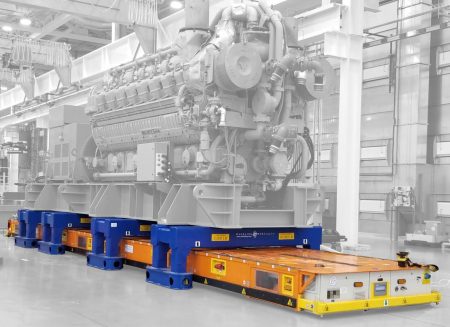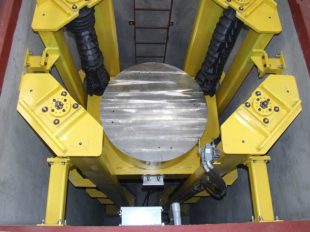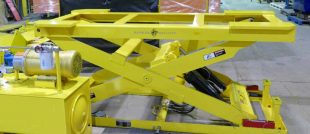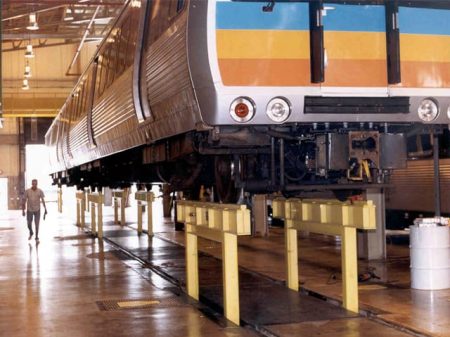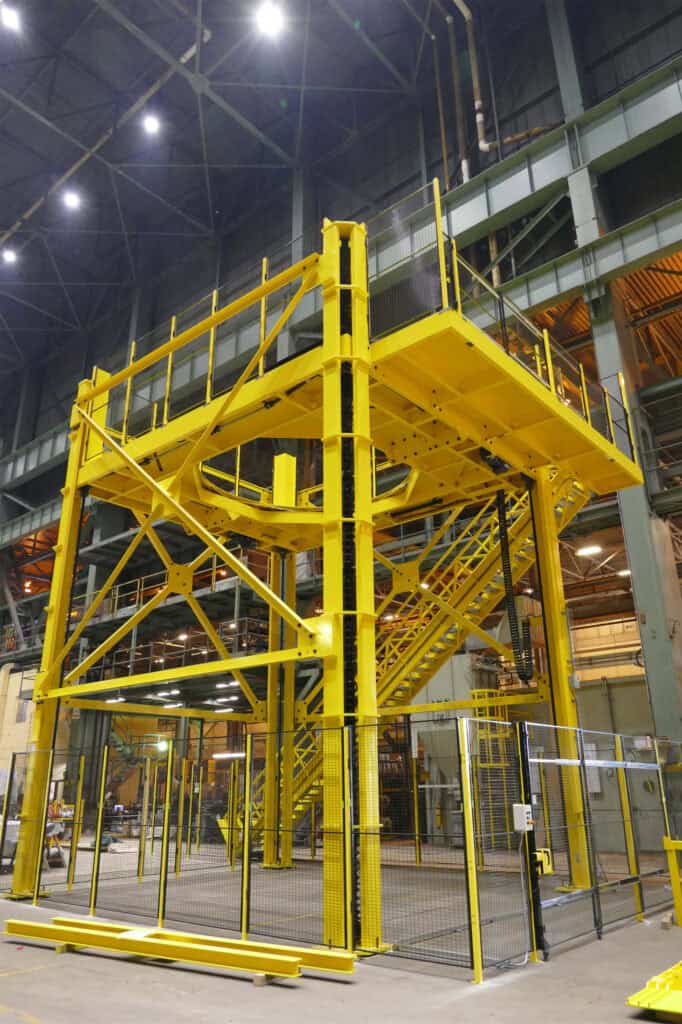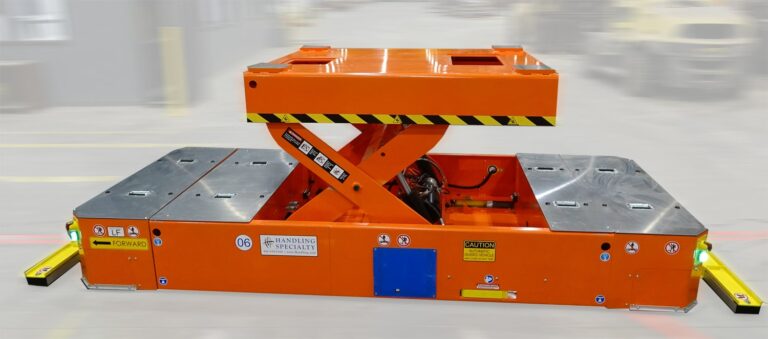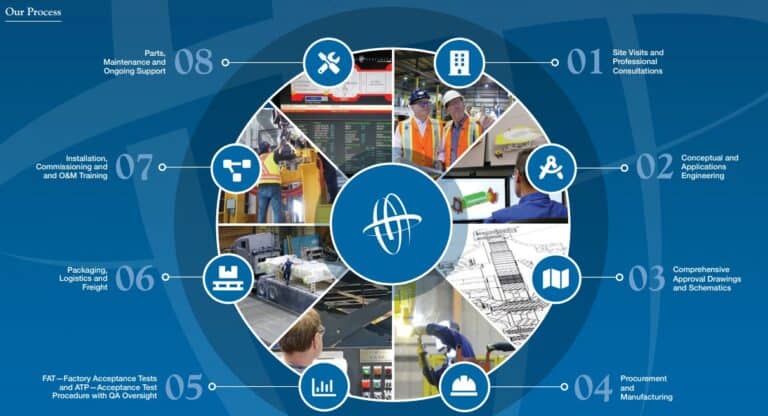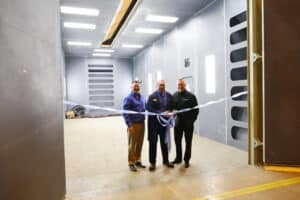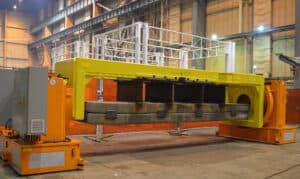Assembly, MRO, and manufacturing organizations are constantly seeking ways to streamline their processes and improve safety and efficiency. One solution that has gained significant traction is vertical assembly. Vertical assembly is the process of integrating various stages of manufacturing vertically, thereby providing a seamless and efficient workflow. Explore the benefits and key components of vertical assembly solutions, and read real-world case studies showcasing its successes. Additionally, we’ll discuss strategies for streamlining processes, the future of manufacturing with vertical assembly solutions, and overcoming implementation challenges.
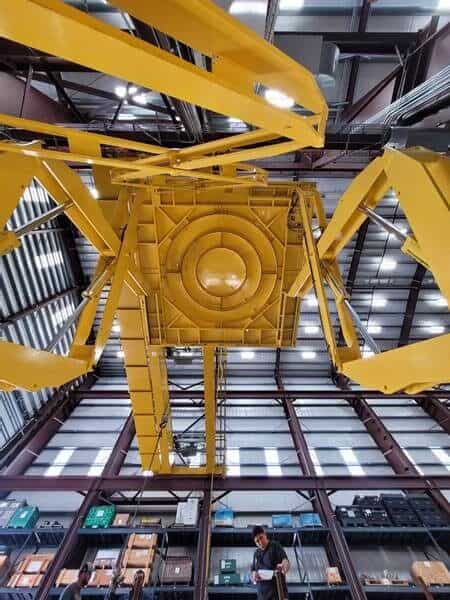
Understanding Vertical Assembly in Manufacturing
Vertical assembly is a component of the manufacturing process that involves the integration of different stages of production vertically. This approach allows for a more streamlined and efficient assembly process, resulting in improved productivity and quality assurance. Assembly solutions play a crucial role in ensuring the smooth execution of manufacturing operations by automating the assembly process and optimizing material handling.
The Basics of Vertical Assembly Solutions
Vertical assembly solutions encompass a wide range of automation solutions that streamline the assembly process. These solutions enable the integration of various assembly operations, such as fastening, sealing, and insertion, into a single platform. By utilizing precision automation technologies like drop-lifters, and personnel lifts, vertical assembly solutions significantly enhance the speed, accuracy, and repeatability of assembly operations. Furthermore, these solutions facilitate efficient packaging and handling of finished products, minimizing the risk of damage during transportation and storage. Overall, vertical assembly solutions offer a comprehensive approach to manufacturing, addressing the needs of diverse industries and application types.
Advantages of Implementing Vertical Assembly
Implementing vertical assembly solutions offers increased efficiencies to assembly facilities. By including vertical personnel lifts and other vertical assembly solutions, you eliminate bottlenecks and reduce production time, leading to higher productivity. Quality assurance is another significant advantage. With integrated assembly processes, manufacturers can ensure consistent product quality by maintaining process control. By optimizing the use of resources and minimizing material waste, manufacturers can achieve sustainable and eco-friendly production practices by going vertical in their assembly operations. Overall, the implementation of vertical assembly solutions leads to improved efficiency, enhanced quality assurance, and sustainability in manufacturing operations.
Key Components of Vertical Assembly Solutions
Vertical assembly solutions comprise various key components that enable seamless integration and automation of assembly processes. These components include precision automation technologies, such as personnel lifts and drop lifts that ensure accurate positioning and movement of assembly components. Personnel lifts can be heavily customized to assist in the efficient assembly and inspection of products by including sliding bridges, safety rails, E-stops, limit switches, audible and visual alarms, protective cages around the equipment, and more. Automation also plays a crucial role in enhancing efficiency by automating assembly operations with precision and speed. These key components work together to optimize the assembly process and improve overall manufacturing efficiency.
Role of Automation in Enhancing Efficiency
By automating repetitive and time-consuming tasks, vertical assembly solutions enable manufacturers to achieve higher productivity and reduce labor costs. Here are some key ways in which automation enhances efficiency in assembly operations:
- Improved speed and accuracy: Automation can perform assembly tasks at a much higher speed and with greater precision than human operators.
- Increased flexibility: Automation can be programmed to perform a wide range of operations, allowing for greater flexibility in production processes.
- Enhanced process control: By utilizing sensors and vision systems, automation ensures consistent process control, resulting in higher quality assurance.
- Reduction of human error: Automating assembly tasks minimizes the risk of human error, leading to improved product quality and reliability.
- Efficient resource utilization: Automation optimizes the use of resources, such as materials and energy, resulting in cost savings and sustainability benefits.
Overall, Automation play a pivotal role in enhancing efficiency and optimizing assembly operations in vertical assembly solutions.
Case Studies: Success Stories in Vertical Assembly
In the manufacturing sector, vertical assembly solutions have led to significant breakthroughs, enabling manufacturers to achieve vertical integration whether it is below grade or above, depending on the height of the facility, resulting in improved efficiency, quality products, and increased scalability. Let’s explore two case studies that highlight the benefits and success of vertical assembly:
Energy industry vertical assembly solutions include turbine lifts that rise either from below grade, where technicians can assemble or repair the turbine ergonomically with their feet firmly on the floor and the lift rising as assembly occurs, or on a four-post lift that raises the technicians as the turbine is assembled above grade.
Automotive vertical assembly equipment can be seen in Drop lifters that move the chassis up a level during the assembly process via mast-style belt or chain lifts. In this example, the mast structure supports the lift carriage, while the drive train employs a belt equalization system, operated by an electro-mechanical motor with lock-position actuators that allow for a smooth transition.
Impact on Productivity and Scalability
The adoption of vertical assembly solutions has a significant impact on productivity and scalability in manufacturing operations. Here is a breakdown of the key benefits:
Productivity:
- Reduction of production time through streamlined assembly processes
- Automation of repetitive tasks, minimizing manual labor requirements
- Enhanced process control, leading to improved quality and fewer defects
- Optimal resource utilization, reducing waste, and maximizing efficiency
- Faster time to market due to efficient assembly operations
Scalability:
- Flexibility to accommodate changing production demands
- Increased capacity to handle larger production volumes
- Improved supply chain management, ensuring timely delivery of products
- Seamless integration of new product designs and modifications
- Ability to respond quickly to market demands and customer needs
Strategies for Streamlining Processes
To further enhance efficiency and productivity, organizations can implement strategies to streamline their processes in vertical assembly solutions. These strategies include customizing solutions for diverse industries.
Customizing Solutions for Diverse Industries
Customization streamlines processes in vertical assembly solutions. Different industries have unique requirements and challenges that need to be addressed. By customizing solutions to meet specific industry needs, Handling Specialty Manufacturing can help optimize the efficiency and effectiveness of your assembly operations. This customization may involve adapting automation technologies, safety features, or assembly processes to align with industry standards and regulations. Additionally, customization allows for the integration of specialized equipment or tools tailored to the specific requirements of each industry. By customizing solutions, Handling Specialty understands manufacturers can maximize the benefits of vertical assembly and achieve higher levels of efficiency and productivity.
The Future of Manufacturing with Vertical Assembly
Embracing innovative solutions that enhance efficiency, improve quality, and drive sustainability is the future of manufacturing and assembly processes. Vertical assembly is at the forefront of these advancements, enabling manufacturers to stay competitive in the era of Industry 4.0. The next generation of vertical assembly solutions will leverage emerging technologies such as IIoT (Industrial Internet of Things) and advanced robotics to further optimize manufacturing operations by predicting parts failure and equipment wear before they cause lengthy downtime.
Preparing for Industry 4.0 and Beyond
Handling Specialty knows that manufacturers need to prepare for the future of smart manufacturing and vertical assembly. This preparation involves embracing digital transformation, investing in advanced technologies, and developing a skilled workforce. Smart manufacturing systems powered by IIoT and data analytics will enable manufacturers to achieve real-time monitoring, predictive maintenance, and intelligent decision-making. By implementing these systems, manufacturers can optimize production processes, reduce downtime, and enhance overall efficiency. Additionally, organizations must focus on training and educating their workforce to adapt to the changing manufacturing landscape. Emphasizing skills in automation, robotics, and data analysis will ensure a skilled workforce capable of harnessing the full potential of vertical assembly and Industry 4.0.
Overcoming Challenges in Implementation
While vertical assembly solutions offer numerous benefits, organizations may face challenges during their implementation. One key challenge is customization.
Addressing Customization Concerns
A skilled design/build company like Handling Specialty builds custom material handling solutions for multiple industries worldwide. Using an organization with experience, and a dedicated engineering department makes all the difference when designing a vertical assembly solution for your facility’s specific needs. Look for multiple case studies that support a company’s claim that they can design, build, and support your custom vertical assembly equipment. With a capital expenditure like assembly, MRO, and manufacturing solutions, you want to be certain that the company you’re working with possesses the skills and experience needed to satisfy your operation’s requirements.
What We’ve Learned About Vertical Assembly Solutions
In conclusion, vertical assembly solutions offer a transformative approach to manufacturing processes, enhancing efficiency, productivity, and scalability. The integration of automated systems and robotics plays a pivotal role in streamlining operations and driving success stories in various industries. Embracing vertical assembly not only addresses automation but also paves the way for industry advancements, preparing for the future of manufacturing. By customizing solutions, reducing lead times, and optimizing efficiency, businesses can achieve cost savings and improve product quality. As we navigate towards Industry 4.0 and beyond, vertical assembly stands out as a key driver of innovation and competitiveness in the evolving manufacturing landscape.
Frequently Asked Questions
What Makes Vertical Assembly Solutions Stand Out?
Vertical assembly solutions stand out due to their precision, customization, sustainability, and automation capabilities. These solutions optimize manufacturing processes and enhance efficiency, leading to improved productivity and quality assurance.
How Can Businesses Start Transitioning to Vertical Assembly?
Businesses can start transitioning to vertical assembly by developing a strategy, implementing automation technologies, and partnering with vertically integrated contract manufacturers for support and guidance.
What Are the Long-Term Benefits of Vertical Assembly?
The long-term benefits of vertical assembly include increased productivity, improved quality assurance, scalability, and cost savings through optimized resource utilization and streamlined manufacturing processes.
How Does Vertical Assembly Impact Product Quality and Consistency?
Vertical assembly ensures product quality and consistency by minimizing human errors, optimizing process control, and utilizing automation technologies for precise and accurate assembly operations.
If interested in vertical assembly solutions for your operations, contact our technical sales team.

